SUMMARY
This is AI generated summarization, which may have errors. For context, always refer to the full article.
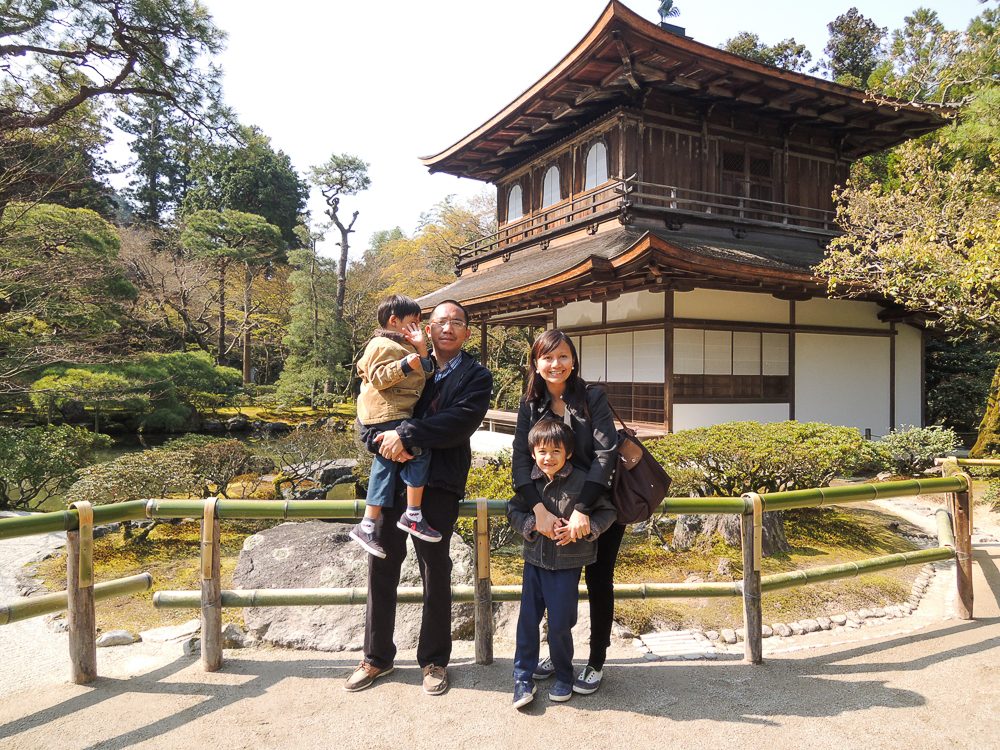
I did not expect to find anything akin to satori – enlightenment – at Ryoan-ji, legendary as its rock garden was. I knew it would be hard to find a quiet moment of meditation in the middle of a throng of tourists jostling for photos. Doing so with two rowdy kids would be impossible, I thought. (READ: The budget traveler’s guide to Japan)
But as I was walking along the path to the garden appreciating the cherry blossoms across a large pond, a moment suddenly came. There I was, struggling to keep the kids walking along the path, chasing my son Magnus from time to time and insisting he wore his shoes instead of walking barefoot, while trying desperately to find a perfect, quiet moment to take in the sublime and ephemeral beauty of the sakura.
It was neither calm nor meditative, yet I reached a moment of perfect clarity because I finally saw things as they were: Magnus was a curious child who had sensory challenges; I was his father and naturally had to look after him; we were in one of the most beautiful places on earth.
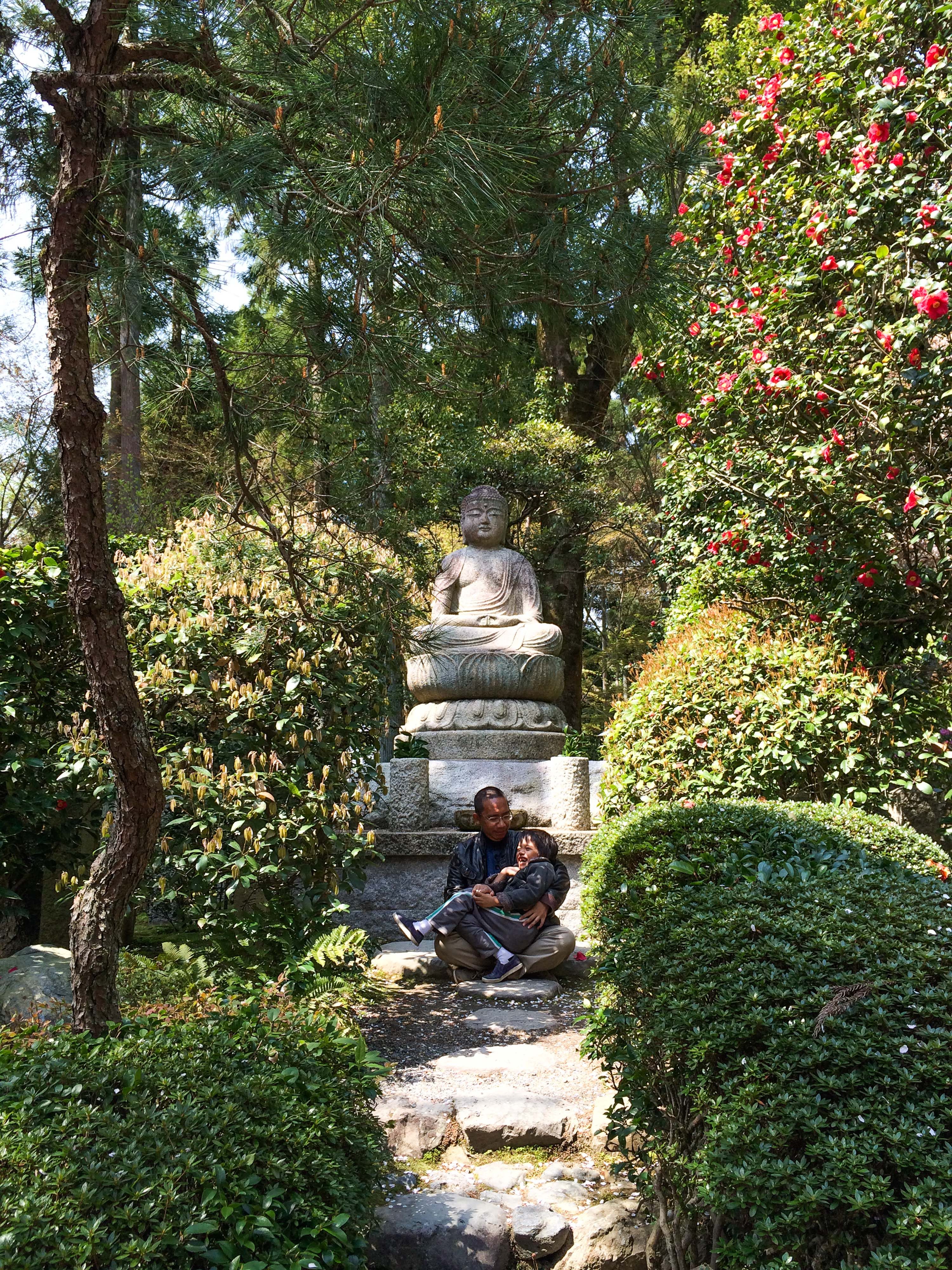
I, a student of mindfulness, finally found a moment of inner peace amidst all the chaos of the world. I meditated and I prayed under the image of Buddha and thanked the Lord for creating this beautiful place and for bringing me there. It is a moment that will stay with me.
Beauty and satori at Kyoto’s gardens and temples
Since I arrived in Japan, I had seen beauty in many places, even in highly urbanized Tokyo. When we went to Kyoto, the occasional snippets soon became a torrent as the very street we stayed at – Nenenomichi – was lined with cherry blossoms. So we saw one beautiful temple and garden after the other until, without warning, while I was looking at a pond surrounded by cherry trees at Ryoan-ji, the beauty just overwhelmed me and I began to weep.
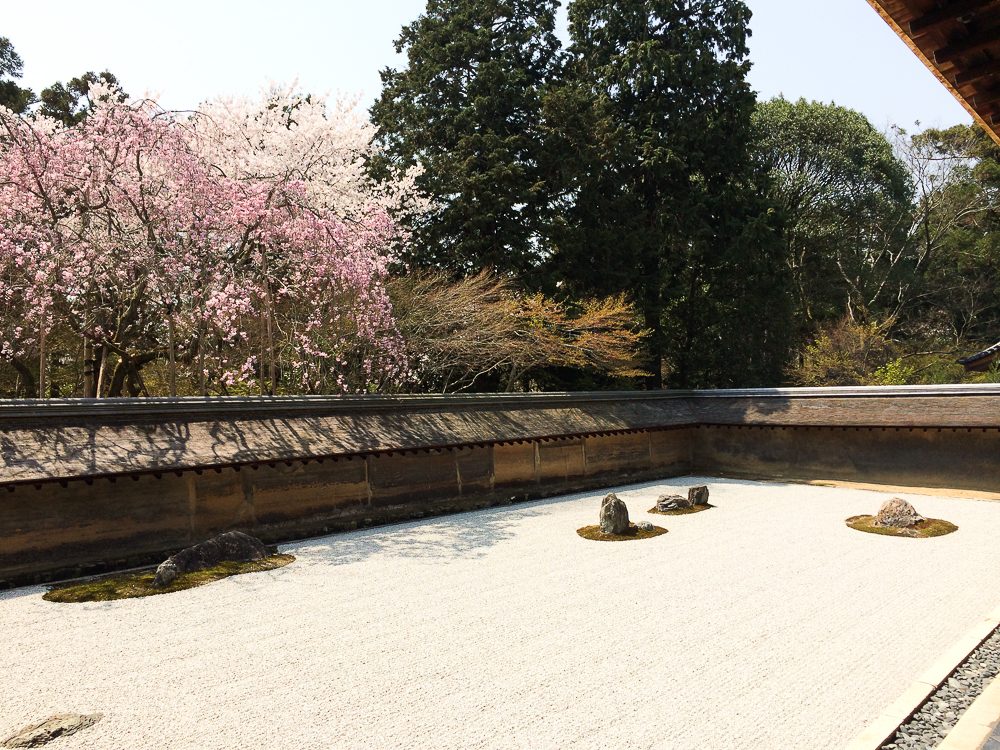
Before Ryoan-ji, we went to Kinkaku-ji early to avoid the crowds. When we finally caught a glimpse of the Golden Pavilion for the first time, I knew right away why it was the top attraction in Kyoto. Gleaming in splendor in the middle of a pond filled with rocks and well tended trees – its golden reflection clearly visible on the water it was one of the most beautiful buildings I had ever seen.
The Japanese shoguns of old, I thought, especially the Ashikagas, not only knew how to wield power; they also knew how to live, as this was once their retreat before they transformed it into a temple.
As if to seal the moment in my memory, a crane suddenly unfolded its wings and glided across the pond, showing a real life version of countless wall decors I had seen of pagodas and cranes and ginkgo trees. So I finally saw the real beauty behind many a tacky reproduction.
As if seeing Kinkaku-ji and Ryoan-ji were not enough to fill the day, we proceeded to Arashiyama to visit the famous bamboo forest. While it was nice to have our pictures taken, it did not quite transport me to another world as some writers describe the place, probably because I see bamboo every morning when I drink my coffee in Manila.
As my wife began to get tired of walking, she asked that we pass by the Tenryu-ji Temple – Temple of the Dragon of the Sky – instead of walking further uphill. This was one instance when my wife’s distaste for walking turned out to be a boon. I did not realize how spectacular Tenryu-ji’s garden was until I saw it.
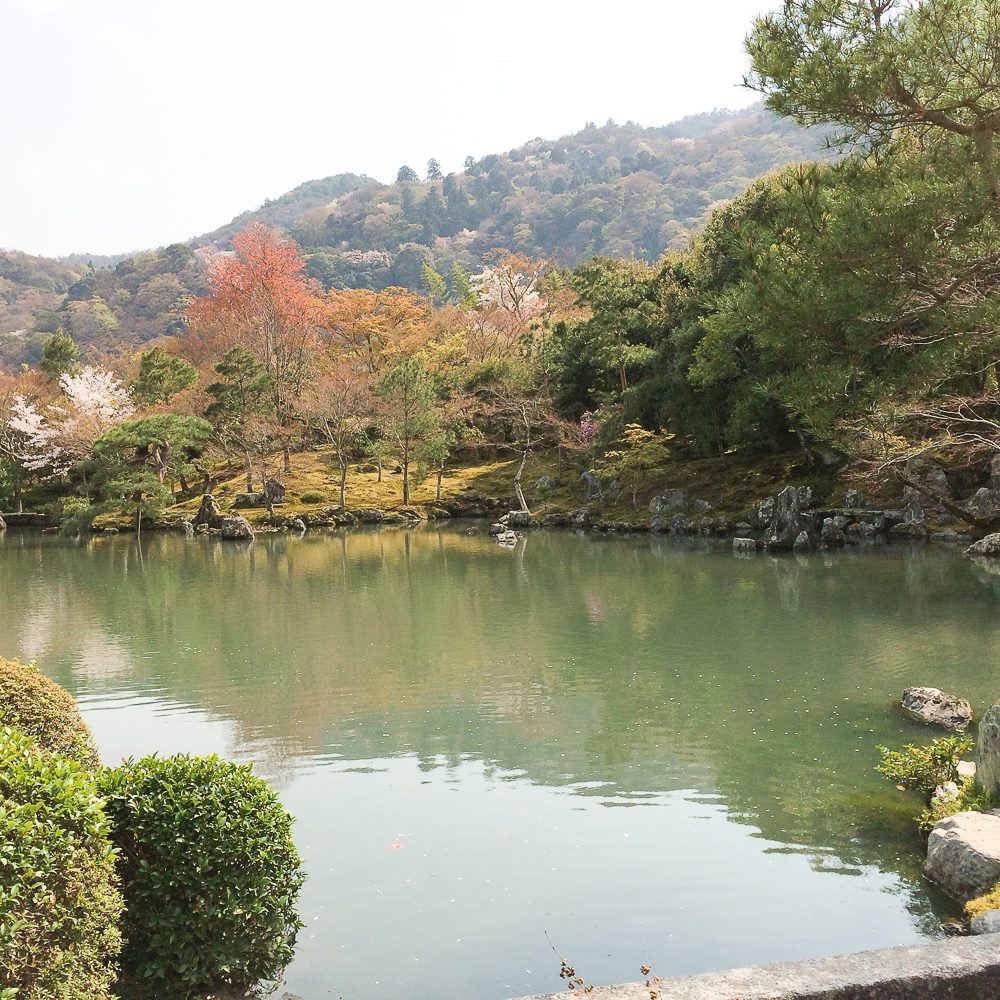
Almost 700 years old, it was a large pond with carved Buddha images in the middle, a couple of small islets connected by a stone bridge on the foreground, and various trees in a spectacular array of colors.
I can clearly remember the oranges, pinks and reds amidst the greens. In a perfect example of shakkei or borrowed scenery, at the back rose a mountain to frame the garden view. I was never a fan of gardens before – I thought it was the special fancy of old people like my parents who long to go back to nature. Now I gush about it because it was one of the most beautiful sights in my life. I could have spent hours staring at it.
A beautiful garden is mindfulness writ large for the placement of each rock, the growth of each tree, the number of koi in the pond, and the very angle at which the mountain behind can be viewed were all first seen in the mind of the master gardener and then lovingly created in reality through the daily scraping of the sand, and the trimming even of the moss on the ground for 7 centuries.
I must confess I did not exactly have an hour of uninterrupted contemplation. It was punctuated by stressful moments like running after Magnus who managed to climb down the viewing platform, cross the rope cordoning off the garden, and walk on the very sand the monks so devotedly rake every morning!
Titus, meanwhile, kept making silly ninja moves while perched on a railing of the viewing deck. We were even reprimanded by stern looking monks for climbing the deck directly from the garden instead of going through the pavilion entrance. But none of that disturbed my equanimity. Even if only for a day, I had reached satori in Kyoto.
Mindfulness and sincerity in Japan’s service culture
I was excited to ride the shinkansen for the first time on the day we traveled to Kyoto. Ever since I was a boy, I heard my dad talk about the bullet train and how it was so fast it could take one from Tokyo to Osaka in 3 hours.
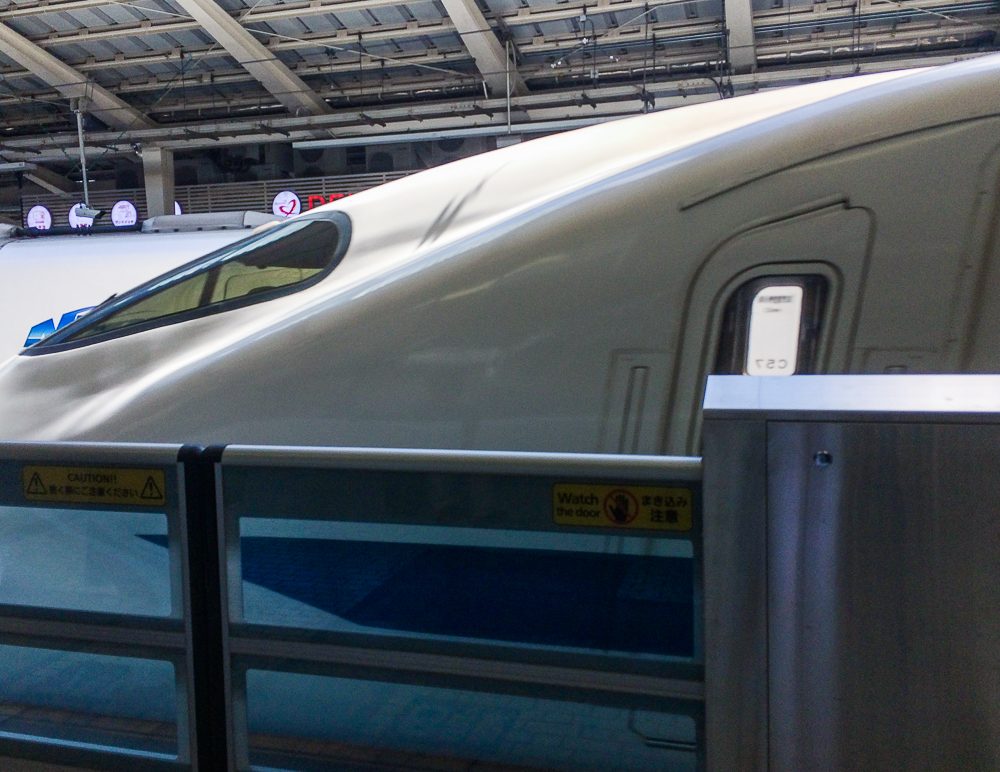
Of course, I did not know how far Osaka was from Tokyo and I think my dad never had the chance to ride the shinkansen when he was in Japan, but this was the stuff of boyhood fantasies – and there I was on the platform, after having paid an arm and a leg to get a Japan Rail Pass.
And so almost without warning, a bullet train zoomed past us. The ground shook a bit but, otherwise, it glided smoothly like a spaceship on wheels. When we finally boarded our train, it was like entering a sci-fi movie, only that Japan has had a bullet train since the 1960s! I resolved that if I ever get the chance, I would build a train network in the Philippines so one can travel from Manila to Laoag in under 3 hours.
Tired after a long trip from Manila that passed through Hong Kong, I decided to give us a treat by dining in one of the restaurants in the hotel.
We stumbled upon Ukai and I am glad we did. It was a different world from the moment we entered. We received gracious greetings of welcome coupled with numerous obsequious bows. We were seated at a table with a view of the interior zen garden and were immediately given warm towels, a welcome relief after a long journey.
The servers, impeccably dressed, patiently guided us through the menu and even offered the lunch menu when my wife craved for beef. When the food was finally served, what we saw was art on a plate. We were almost embarrassed to be dining there because we were not dressed for dinner and Magnus kept getting off his seat and walking around. But they demonstrated what service really meant by being totally mindful.

Sensitive to the needs of our children, they brought out small plates and spoons and forks for the kids. They even gave complimentary orange juice, of course served in small glasses with straws! Throughout the meal, as we asked questions about what we were eating and as we kept disturbing the peace because of our rowdy children, they patiently served us with dignity and grace. What a wonderful introduction to the Japanese service culture!
And I call it a culture because I saw the same dignity in service everywhere – from the well-dressed taxi drivers wearing white gloves who sometimes gave me extra change because of the traffic, to the convenience store cashier who made other customers wait because he just had to put the sugar in my coffee himself instead of letting me do it.
This culture is truly refined and has attained almost a summit of perfection as it is full of sincerity, mindfulness, and attention to detail. It is the perfect embodiment of quality, but quality with soul.
I expected the worst when we arrived at our ryokan in Kyoto. The Tripadvisor reviews were ugly and the rates were quite expensive, but I went ahead and booked it as the cherry blossom season meant most accommodations were fully booked. I was pleasantly surprised by the hospitality we received.
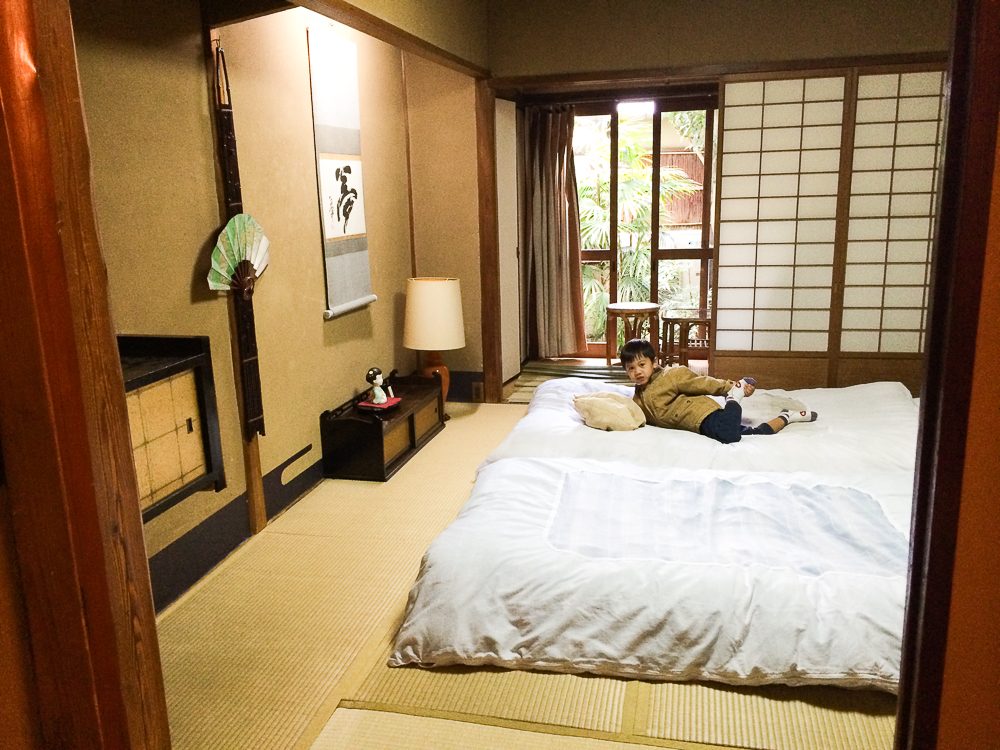
To begin with, the ryokan was right in the center of the tourist trail so it was easy to walk to the sights. It was a genuinely old house in a district protected by the government because of its historic value. It was like staying at Villa Angela, a bahay na bato in the old district of Vigan.
Despite arriving two hours earlier than the check in time, we were warmly received by two elderly women who hardly spoke any English. The room was ready and it was like stepping into another world as we left our shoes at the entrance and walked on the tatami floor.
There were sliding doors covered with paper and at the end of the room were glass doors opening into a pocket zen garden. Less than an hour after we settled in, the elderly lady came knocking, carrying a tray laden with tea and cakes, which my kids unceremoniously devoured.
Moments of mindfulness with the kids
In the afternoon of our first day exploring Tokyo, we decided to soak in the hanami atmosphere at Ueno-koen after spending an hour at the Tokyo National Museum.
The mood was festive. With thousands of cherry blossoms in full bloom, it was as if all of Tokyo decided to go on an extended lunch break just to see sakura.
Under the trees were plastic tarps on which were groups of Tokyoites young and old drinking sake and beer having a great time.
There was a small theme park with rides right inside the park so we let the kids have fun with the Japanese kids. They had a blast with the rides, then we ate sakura ice cream. Afterwards, we walked under the trees and – not without difficulty given the crowds – found a spot where we could sit.
I drank Asahi beer as I watched people pass by. My wife and I talked about how wonderful it was to have a culture where watching flowers bloom was celebrated. But if one were walking under thousands of trees filled with pink blossoms and one knew such a beautiful moment was fleeting and could only be enjoyed for two weeks, perhaps it was not surprising to stop and appreciate the moment. Perhaps it was not a stretch to think we actually live for these moments.
We started our first day in Tokyo early as we planned to eat breakfast at Tsukiji, the world famous fish market. As we walked through the outer market, we saw sushi joints and stores selling dried fish. At the actual market, we were told by a guard it was not open to the public until 9 am and were directed to a place with shops and more sushi bars. We saw a long queue for the famous Sushi Dai.
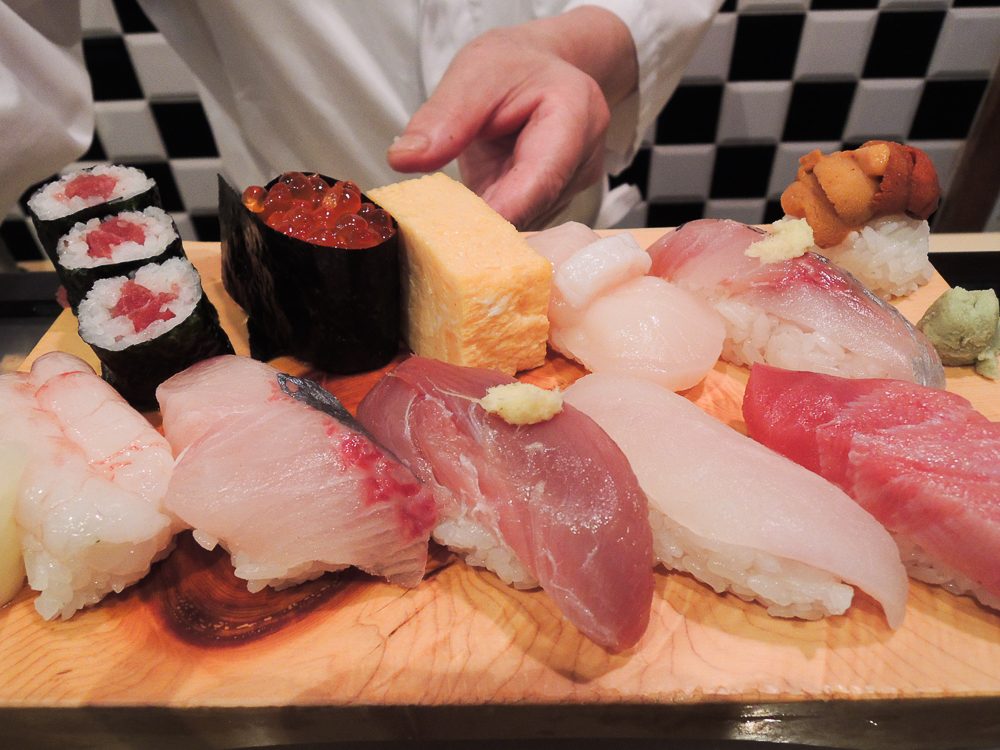
Coming with tired and famished wife and kids, we were not in the mood to line up so we entered an empty sushi bar manned by two elderly sushi chefs. As usual, we were welcomed with bows. We ordered the sushi platter and the sashimi with rice.
So the sushi duel with my son Titus began. He had developed a taste for sashimi ever since we dined at a Japanese restaurant in Davao so I had a hard time trying to figure out which of the sushi I could eat as he began picking off the raw fish one by one from the mounds of rice. The struggle was perhaps understandable because we were eating the freshest and the best fish in the world, right inside the Tsukiji market. (READ: Turning Japanese: Kyoto and Osaka on a budget)
I kept making almost obscene sounds of delight at the scrumptious seafood, especially the uni sushi (sea urchin gonads) and ikura gukan (salmon roe), which I tasted for the first time. It was a salty explosion of the fruits of the sea in every bite.
On our second day in Kyoto, we decided to walk up to Kiyomizu-dera, which was situated on top of a hill southeast of our ryokan. Kiyomizu-dera is a UNESCO heritage site and is notable for being constructed out of wood without using any nails.
I was afraid we were never going to make it because my wife would be too tired of the uphill climb, but it was a good thing the entire route was lined with shops so we ended up spending more time looking at the shops than at the actual temple!
We had another pleasant moment on the way up when, in a pure instant of childhood joyful playfulness, Titus engaged Magnus in a sumo wrestling match. It was great to see Magnus engage his little brother in play. I was half afraid they would crash down the sloping pathway but I just let them be.
As soon as we got back to Tokyo, we dropped our luggage at the hotel and took a taxi to Hakunhikan, a famous toy store at the Ginza shopping district. As promised, I bought Titus a Lego Chima set and a Gundam robot while I got Magnus two puzzle sets.
On our very last day in Tokyo, the kids and I went to Shinjuku-gyoen, a large patch of green in the middle of bustling Shinjuku district. I was happy we took the trip despite my wife backing out at the last minute. It was just like UP as there were a lot of open spaces where we could sit. I found a nice spot under a tree.
After taking photos of the cherry blossoms, I went to work with Titus building his Lego set while eating strawberries. I let Magnus take off his shoes so he could feel the grass while he was walking around munching on a seaweed snack.
I was in Japan in the middle of a beautiful park during cherry blossom season and I was with my children. What more could I ask for? Stringing together moments like these, whether in Japan or at home, whether in Japan or at home, left me with the feeling that I was living a beautiful, mindful, and meaningful life. – Rappler.com
Japan has so many things to offer its visitors. Experience the sights, sounds, and gastronomic adventure in Japan with great deals on travel and hotels. If you want to know more about how you can get these discounts, click here.
Add a comment
How does this make you feel?
There are no comments yet. Add your comment to start the conversation.